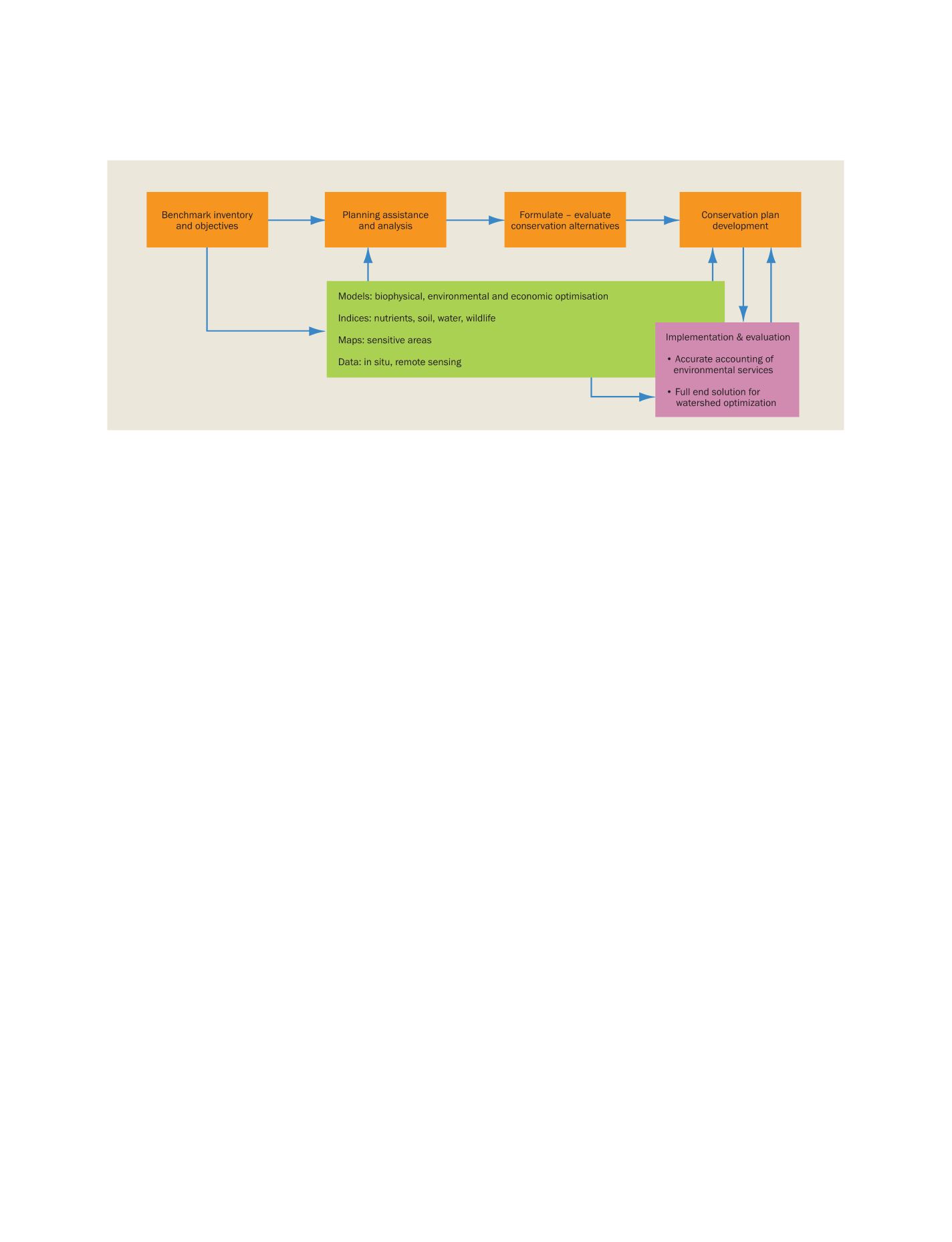

[
] 247
Some factors, such as weather and climate variability
and change, are not only important at the local and
regional level but also globally. This is especially true
with regard to rainfall and water availability. The contin-
ued expansion of irrigation and associated water
withdrawal for improved agricultural production will
continue for the rest of this century. This will further
exacerbate the competition between municipal, indus-
trial, agricultural and environmental requirements for
fresh water resources. The impacts of these factors on
agriculture production vary greatly by region, thus
requiring the development of regionally-specific agri-
cultural strategies.
For agriculture to meet these challenges, it requires
information and knowledge about ecological, economic,
social and cultural aspects of agricultural production,
and better-informed citizens and decision makers. These
challenges, combined with growing demand for food,
feed, fibre and fuel, will result in major shifts in the
distribution of natural and managed ecosystems for the
rest of this century. They require, in turn, sustained
observation and greater scientific and technological
innovations to meet the growing demand from agricul-
tural ecosystems.
Opportunities in global agriculture
There are many opportunities to apply science and tech-
nology to meet the challenges global agriculture faces.
Integrated natural resources management practices such
as nutrient, pest and water management together with
crop rotations and conservation tillage practices have
enabled enhanced production of goods and services
from agricultural ecosystems, while preserving their
integrity and function.
Advances in biotechnology (i.e. genomics, genetics,
and proteomics), nanotechnology, geospatial, and infor-
mation and telecommunication technologies will
continue to enable us to meet these challenges. These
include advances in the biotechnologies of genomic,
oping countries. For example, world cereal production has doubled
since 1961, with average yields per hectare increasing around 150
per cent in many high and low-income countries. Despite this great
progress, there are about a billion people in the world who suffer from
hunger and malnutrition. The projected increase in global popula-
tion, urbanization and changing lifestyles will continue to exert
pressure on natural, agricultural and other managed ecosystems to
provide necessary goods and services for the rest of this century.
Challenges facing global agriculture
Agriculture faces many challenges and opportunities in the 21st
century, as it has since the beginning of modern agriculture. Today,
global agriculture is a complex system that can be described on the
basis of biophysical, economic and socio-cultural parameters. All
three parameters will have to be considered in responding to 21st
century demands. For the rest of this century, agriculture needs to:
• Ensure food security for an increasing global population
• Increase agricultural productivity and its efficiency while sustain-
ing the natural resources base
• Adapt to and/or mitigate the impacts of weather and climate
changes
• Accommodate the growing demands for water and energy
• Respond to an evolving global market.
Agriculture is an energy intensive sector of the global economy.
Changes in energy types, availability and prices will have a signifi-
cant impact on food production, processing and distribution. The
growing reliance on fossil fuels for farming operations as well as
fertilizers and chemicals has increased greenhouse gas emissions,
notably CO2, CH4 and Nitrogen oxides. This trend is contributing
to global and local environmental changes with negative conse-
quences to agriculture itself, thus eroding the natural foundation
upon which it depends.
Both global and local policies and decisions continue to influence
agricultural development. At the global level major factors such as
markets and policies, international trade, and public-sector invest-
ments in agricultural research play an important role. At the local
and regional level, social and cultural issues, and grassroots solu-
tions to everyday challenges are major factors.
Assessment tools
Source: Ghassem Asrar
Assessment tools can document the benefits of conservation practices across the landscape
S
OCIETAL
B
ENEFIT
A
REAS
– A
GRICULTURE
















